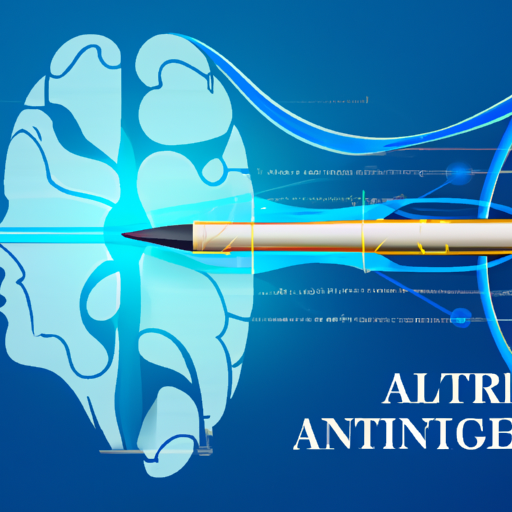The Basics Of Artificial Intelligence: A Friendly Introduction
Artificial intelligence, or AI, is a term that gets thrown around a lot these days. From self-driving cars to virtual assistants, AI seems to be everywhere. But what exactly is artificial intelligence? Let’s dive into the basics of artificial intelligence and unravel this fascinating field together.
What Is Artificial Intelligence?
At its core, artificial intelligence refers to the simulation of human intelligence in machines. These machines are designed to think and learn like humans, making decisions based on data and past experiences.
AI can be split into two main categories:
– Narrow AI: This type of AI is designed for specific tasks like facial recognition or email filtering.
– General AI: This is the holy grail of AI research, aiming for machines that possess human-like cognitive abilities across various domains.
While most of the technology we see today falls under narrow AI, researchers are continually working towards achieving general AI.
History And Evolution Of Artificial Intelligence
Understanding the basics of artificial intelligence requires a look back at its origins. The concept dates back to ancient myths about mechanical beings endowed with human-like intelligence.
However, the formal birth of AI as an academic discipline occurred in 1956 during the Dartmouth Conference. Key figures included John McCarthy and Marvin Minsky, who are often credited as founding fathers of artificial intelligence. Since then, there have been waves of optimism and periods known as “AI winters,” where progress stalled due to limitations in technology and understanding.
Today, we’re experiencing a renaissance in AI thanks to massive data availability (Big Data), powerful computing resources (thanks to cloud computing courses), and significant advancements in algorithms.
Essential Components Of Artificial Intelligence
To grasp the basics of artificial intelligence, it’s essential to understand its key components:
– Machine Learning (ML): This subset allows machines to learn from data without being explicitly programmed. It involves training algorithms on large datasets until they can make predictions or decisions.
– Natural Language Processing (NLP): NLP enables machines to understand and respond to human language. This technology powers everything from chatbots to language translation services.
– Computer Vision: Using this technology, computers can interpret and make sense of visual information from the world—think facial recognition systems.
– Robotics: When combined with other forms of AI, robots can perform complex tasks ranging from assembly line work to intricate surgeries.
These components often work together seamlessly in sophisticated systems like self-driving cars or personalized recommendation engines on streaming platforms.
The Role Of Python In AI Programming
When it comes to programming languages for AI development, Python reigns supreme. Its simplicity and extensive libraries make it ideal for tasks ranging from data analysis to building complex neural networks. Many professionals start their journey with “AI programming with Python” due to its accessible syntax and vibrant community support.
Popular libraries such as TensorFlow, Keras, and PyTorch offer pre-built functionalities that expedite development processes significantly. Whether you’re pursuing an introduction to artificial intelligence or diving deeper into advanced topics like deep learning—a strong foundation in Python will serve you well.
Real-Life Applications Of Artificial Intelligence
The impact of artificial intelligence permeates various industries. Here are some compelling real-life examples:
– Healthcare: AI assists doctors by providing accurate diagnostic tools and predicting patient outcomes through vast medical databases.
– Finance: Algorithms monitor market trends in real-time for risk management while offering personalized financial advice.
– Entertainment: Streaming services use machine learning algorithms for content recommendations tailored precisely for your tastes.
– Education: Adaptive learning platforms tailor curriculums based on individual student performance metrics.
The potential applications seem limitless—and they all stem from understanding the basics of artificial intelligence!
The Interplay Between STEM And Artificial Intelligence
Artificial Intelligence is deeply intertwined with Science Technology Engineering And Mathematics (STEM). The cross-pollination between these fields drives innovation forward at a rapid pace. Advances in hardware engineering facilitate more efficient computation; breakthroughs in mathematics optimize algorithmic performance; insights from scientific research inform new models; technological innovations enable scalable solutions via cloud infrastructure—like those learned through cloud computing courses!
A solid grounding across multiple STEM disciplines equips aspiring professionals not just with theoretical knowledge but practical skills essential for pushing boundaries within this ever-evolving landscape.
Getting Started With Artificial Intelligence Learning
For those intrigued by everything we’ve discussed so far—the question arises: how does one begin their journey?
1) Start With An Introduction To Artificial Intelligence: Plenty of online resources offer introductory courses covering fundamental concepts without overwhelming complexity.
2) Learn Programming: Proficiency in languages such as Python is indispensable given its extensive use within industry applications related specifically towards machine learning & neural networks projects outlined earlier regarding ai programming with python methods predominating educational syllabi worldwide increasingly so nowadays too evidently enough indeed undeniably!
3) Dive Into Specialized Topics: Once comfortable navigating basic principles—explore specialized areas matching personal interests whether natural language processing vision robotics even quantum computing perhaps possibly potentially perhaps? Well maybe who knows right?!

